Continued on from Part 1
Part 2 below
Donington Park Circuit
After my exploration of the British Motor Museum, I continued on to Donington Park Circuit. While I was here literally a week before, I had a schedule gap so decided to join a new track day group - OpenTrack - for a late season day.
My trusty 2018 Caterham 420R made its appearance, supported as usual by TFL Racing. They keep the car in Stratford, only an hour away from Donington. They were supporting three Caterhams - myself and two 420 race cars. While nominally called Caterham 420 they are not the same as the road car 420R. They have LESS horsepower out of their 2L Duratecs at 180hp than my road car 420R which has supposedly 210hp. The race cars are closer to the old R300 spec for a fixed one class racing code. But as race cars they are much lighter - 60kg lighter than a road spec 420 and probably another 50kg from them being S3 chassis and mine being SV chassis. Plus they have Sadev 6 speed sequential whereas I have the relatively track-unfriendly Miata MX5 5 speed gearbox. The race cars have the 3.6 rear end while the road car has the 3.9 rear end - higher top speed for the race car plus better ratios to stay on the power band consistently,
A late season, just before winter track day comes with some disadvantages. First, its cold and damp. There had been a lot of rain in the days preceding so there were wet spots and draining water than was not going to clear on the day I was there. Tires don't warm up much if at all. I am wearing layers of clothes to insulate me from the 100mph cold wind whipping across my chest. Second, as it is usually cheap, the participating clientele is not your usual well prepared participant. So the day was popular with various older cars that had been driven through your local Halfords (think Napa or Advance Auto) for go faster parts, in some cases taped onto the car. Third, the drivers are not as track aware as the normal contingent thinking they are out for a bit of a laugh day. Cars modified like this have a reputation for not being fast, not being reliable, quite evil handling, and most likely to run out of talent into a wall.
Some people referred to the clientele as "chavs" which is a somewhat derogatory term for the lower socio-economic classes in the UK. Personally, I preferred the well remembered words from a previous track day operator, who used to refer to the cars as "turbo nutter barges." Both descriptions are probably accurate!
Donington is not a long circuit but its layout in a valley makes for a wonderfully flowing layout. The run down through Craner Curves before reaching Old Hairpin is iconic, which by the way is a very fast 4th gear corner for me and definitely not a hairpin.
The circuit is located on the former grounds of a manor. The original manor house, Donington Hall, still adjoins the circuit. While the former gatehouse still exists on the circuit grounds, the driveway used to run across where the circuit is now laid out. The only bit left is the old bridge which was partially demolished to make way for the circuit which runs around it.
Despite my rubbishing of the overall quality of cars earlier, there were exceptions. This VW Golf (turbo I think - it was indecently quick) and BMW E30 were well prepared and well driven.
Because there were a number of participants who were not used to driving on track, their awareness of a Caterham approaching quickly from behind was non-existent. This led to some frustrating trains of cars in the morning where point bys were just not happening. So the TFL Caterham drivers latched on to the strategy for the day. We would blast up behind an unsuspecting hot hatch and make a move to pass without waiting for the point by. This would cause the driver being passed to slightly freak out and jink right allowing us to pass on the left in the somewhat prescribed manner. On most UK track days, passing is on the left, on the straights, only via consent - i.e. point by. Clearly some rules were going to be broken.
But it worked. I was able to navigate traffic cleanly and keep up respectable lap times and begin to enjoy myself.
This splotch of water at the chicane never cleared all day but you could thread the needle through the chicane without it being a problem.
This chap below, with his instructor, was on his first track day. Bit of a daunting task on a day like this with cold damp conditions. But apart from one spin, he did well and was driving nice lines by the end of the day.
The accident and breakdown rate was high. There were a lot of red flags to recover broken cars and those where the driver had run out of talent. No chance our erstwhile Lewis Hamilton below is escaping that beach with an 80s era Renault shopping cart.
This chap lost his hot hatch in Craner Curves and taken a big hit into the wall and bounced back a long way. You can see the tire marks where he left the track at left and discovered to his horror that on wet grass cars speed up even if you are on the brake.
In the meantime, the sensible cars stayed out lapping consistently.
Goodwood Motor Circuit
Most automotive enthusiasts have heard of the Goodwood Revival and Goodwood Festival of Speed held annually. But you may not know the history behind Goodwood. In World War 2, this was the site of RAF Westhampnett airfield, which being sited close to the English Channel was well placed for Spitfires and Hurricanes to take off for air operations against Germany.
In 1947, the circuit was laid out around the perimeter road around the former RAF airfield. The airfield is still active today for civilian purposes as the Chichester/Goodwood Airport. The first race meeting was held September 18, 1948.
This circuit is completely separate to the hillclimb course (first used in 1936) which is located a short distance away at Goodwood House.
Goodwood Circuit became famous for its non-championship Formula 1 race, plus its sports car sprint and endurance races. The career of Stirling Moss was ended here after a crash at St Mary's corner in 1962. Bruce McLaren died on the Lavant Straight in 1970 after the rear bodywork on his McLaren M8D Can-Am car failed. The fearsome reputation of this circuit led it to ceasing racing in 1966 as the organizers did not want to modify the track with more chicanes to control the speeds that cars were beginning to achieve. The last Formula 1 race in 1965 saw the final lap record of 1 minute 20.4 seconds set by both Jackie Stewart and Jim Clark. Interestingly that is considered a very good lap for a Caterham 420 race car today at Goodwood.
Because the circuit shut for racing in 1966, the facilities were only being used for testing and private events. This led to his historical character being preserved beautifully. Just walking around, you feel the ghosts of past around you.
All the buildings are as they were in the 1960s. Well maintained, exquisitely landscaped. It allows an event like Goodwood Revival to work so well as you can re-image yourself back to the 1960s.
The pits are small. The traditional pit lane on the circuit is tiny. It feels tight for two Caterhams side by side. How they changed tires or refueled in the middle of a race beggars belief.
The paddock behind the pits is laid out in a series of three "U" shaped car ports. Given the wind and rain they afforded no shelter from the elements.
As you can see from the photos already, it was wet. Biblically wet. It had bucketed down the previous few days but the night before it rained inches. There was standing water on the roads on my drive to Goodwood.
TFL Racing were supporting me for the day. They had five Caterhams driving. Twenty cars were signed up. Maximum of ten on the circuit at any one time.
I took the appearance of the rainbow to be that the weather could only get better.
As you can see the carport paddock shelters were mostly useless. Water was flowing through as it drained off. Race boots were soggy in less than 2 minutes.
Now keen eyed observers will have noticed something important about the tires in the above photo. The red and white car has full race wets on with a nice deep chunky tread pattern.
By contrast Doofus Me in the silver 420R below has his Avon ZZS tires on which are marginal for the extremely wet conditions I was facing. And I knew it!
Some optimistic driver had his slicks standing by but they were never going to be used in the conditions. The two Caterhams with the full race wets were the fastest things on track by a long way. Next fastest was me but it was a challenge.
The layout of Goodwood as a perimeter road around an airfield can be seen in the following map. It is fearsomely fast. In the dry, a fast 420R would be close to a 95mph average over the course of a lap. This is Spa-Francochamps type of speedsw with none of the safety. On the left, most of the way around, is a human height earth/tire embankment only around 10 feet from the left hand track edge. If you went off on my day, you would not be able to blink before you hit it. There would be no chance of stopping. Going off right is a much more preferable option as this is just grassy meadows. However, it is a clockwise course and so centrifugal speeds are most likely to spit you off left.
For me, there would be streams across the track at Madgwick and after Fordwater, at around the 06 Runway marker area - keep your wheels straight as you blast through. Huge pools of standing water between Woodcote and the Chicane. The double apex Lavant was just evil forcing you to be super slow and super smooth to avoid going off. Another Caterham came to grief here in the afternoon on the exit of Lavant. The ripped up aluminum skin on the rear basket told me clearly the embankment walls were not friendly to impacts.
To get on track you need to get your car noise tested. Because I did not want to get my hair wet, I borrowed an umbrella and went over to the paddling pool where the poor noise check guys were wading around cars.
Despite having the 92db twin muffler set up, designed for UK track days, I recorded a 97db reading and was allowed on despite the limit being 98db. The noise guys blamed it on their old equipment. Either way, I had my car sticker and wrist band.
Fortunately there was a nice lounge space adjoining the pit lane with complimentary coffee and tea to warm yourself back up. This wood engraving was on the wall.
Most of us have watched a Goodwood event on this circuit at some point. I was disoriented as it looks nothing like that to drive it. I felt it was far more enclosed - high embankment and trees to the left made me feel crowded in. The corners bore no relationship to what I saw on TV in the past. This was a first as most circuits drive like you see them on TV, not for me at Goodwood.
To give you some context for driving this track, I have a one lap video with annotations so you know where you are. Usual excuses apply, it was epically wet, large portions of the left side of the track had lots of wet leaves there, I was on tires that were probably not well suited for the conditions, and it was my first time out on this circuit. Apologies but there is no sound as the water fried the microphone!
Driving in the rain or wet standing water conditions requires a major adjustment in driving style. My car has no front anti roll bar so it is softer, leans more and accentuates the weight transfer across the wheels thereby improving grip in margin conditions. I tend to stick the car in a taller gear through corners to avoid spinning up the tires on exit. At Goodwood I was staying mostly in 4th gear with a change to 3rd for the chicane as it was painfully slow. High revs is a no-go as you could wheelspin in 4th gear over 6000rpm on the Lavant Straight or the stretch between Madgwick and Fordwater, given the circuit is quite bumpy, as befits its character. My usual approach of trail braking in a corner gets minimized back to getting my braking done in a straight line before turning the wheel to make the weight transfers around the car as smooth as possible. I could still get away with trail braking into Woodcote for the first part of the turn but could not get it to work at the Lavant corner as the grip was a lot worse there on the day. Stay off the curbs as these are usually painted in some latex type of gloss paint which becomes slippery as they get wet. The join between the tarmac and the curb is also usually depressed so is a spot to expect water to accumulate - something to avoid.
Most importantly, I drive an unconventional line. The track maps pictured in this article all show a qualifying dry line around the circuit. Its a qualifying line as there is no adjustment for defending against other cars trying to pass. Those track maps assume you are out there on your own trying to set fastest lap. For wet weather, the fastest line will be where the grip is. The video shows me taking an early right hand side entry to Madgwick to avoid a drainage stream on the left. In the dry I would be on the left side of the track and take a later turn in. I constrain my exits to stay away from the wet track edges where there are pools of standing water. After Madgwick and all the way down to Fordwater there was a line of wet leaves on the left side of the track along with lots of standing water both right and left. Wet leaves are lethal to grip so I know to keep away from them. I adjust the line to navigate between various water puddles - the chicane was a particularly good example of this as there was standing water on the left at the foam wall and then 5 feet of puddles on the right at the exit. Threading the needle with an exaggerated 'Z' line was the best solution I could devise there. But the line I was on had grip and I could maintain a decent speed - about 3rd or 4th fastest car on the day. The two fastest were the two Caterhams on full race wets. The next fastest was a close call between myself and an AWD Audi TT coupe demonstrating how good AWD systems are in conditions where grip is problematic. The slowest car was a Porsche GT3RS which was ambling around. All drivers were showing a very healthy respect for the conditions and were driving appropriately. The contrast to the previous day at Donington was remarkable!
Some photos of me circulating in the rain. Below is the exit of Woodcote, heading towards the Chicane and the pits in the distance. Look at the pools of water on the left.
Exiting Madgwick Corner off the Start/Finish Straight.
Turning into Madgwick, with the start/finish line in the background, plus the pit lane.
Coming through the first portion of Lavant.
On the Lavant Straight. Note the high embankment wall to my right, the other side of which is the airfield. You would not want to hit that wall.
Coming through the second part of Woodcote.
Coming through the chicane onto the start/finish line area. The chicane is actually made out of poly-styrene bricks. So if you hit it you will live and your car should be dented but overall able to continue. Up until the mid-1970s, this chicane was brick! Given how tight it is, I am amazed no one was killed by hitting the brick wall that used to be there.
The day I was running there was standing water on the left as you entered and on the right as you exited. This led to a sort of very slow Z shaped line through the chicane to avoid the water.
Don't I make lovely reflections in the pools of water as I drive by. The joke on the day was that we were doing 'Queen Mother laps' because of the conditions. What this really meant was that we would do very slow, regal, parade laps, before finishing up early for a triple gin and tonic.
Going past the pits in the following photo.
In the end I put in close to three hours and knocked over the better part of two full tanks of fuel. I was cold, very wet, and in need of a warming drink but very happy. Despite the conditions, I loved the circuit. Its old school, raw, unfiltered and unforgiving of mistakes. I definitely will go back one day to try for a dry day. Goodwood does not offer many track days as it is expensive and with only 20 cars, hard to make pay. They book out with a lot of corporate entertaining days who are less price sensitive. May take a few years to find the right opportunity to come back. One day....
Links
TFL Racing
-
 2
2
-
 1
1

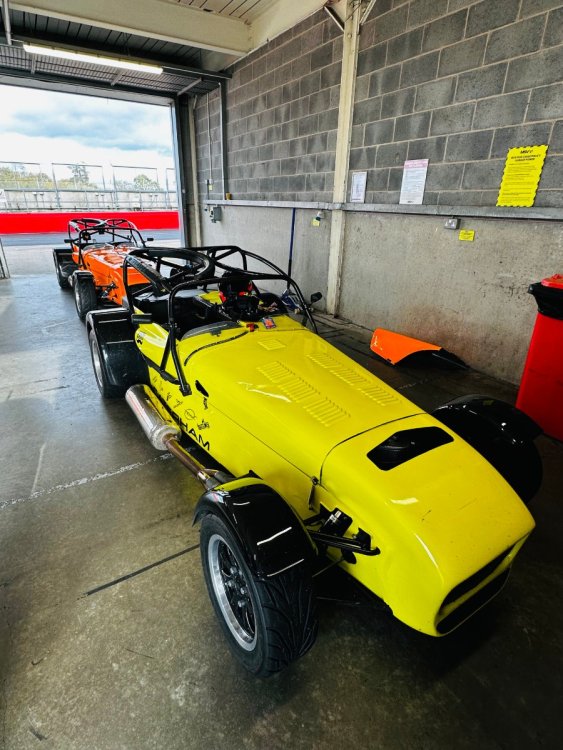
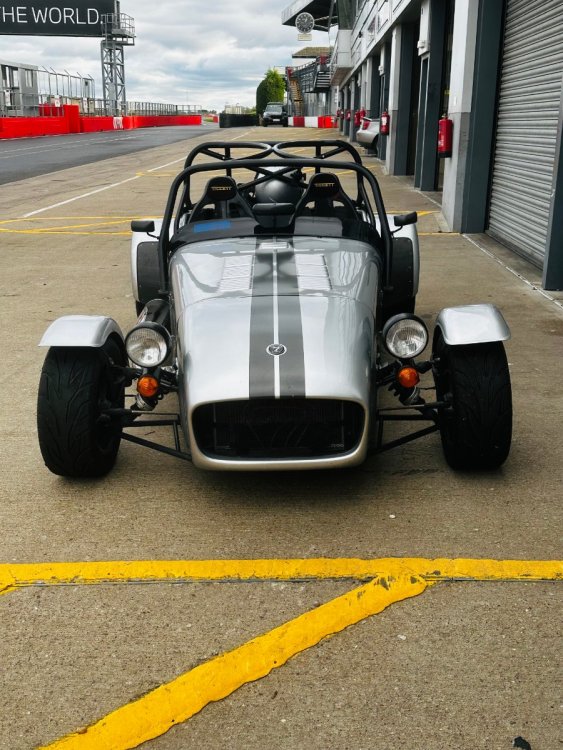
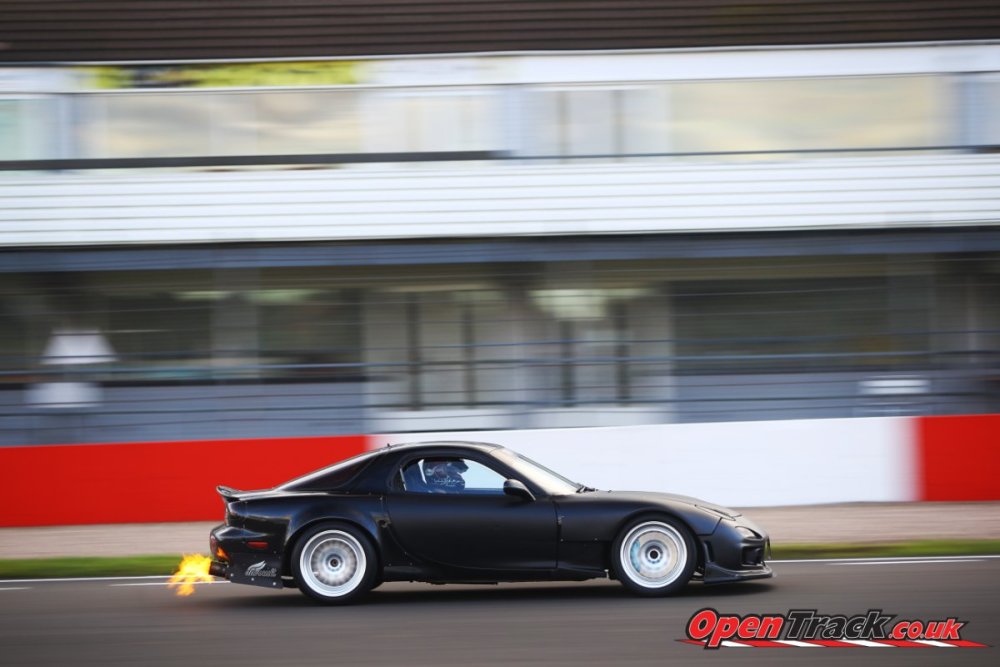

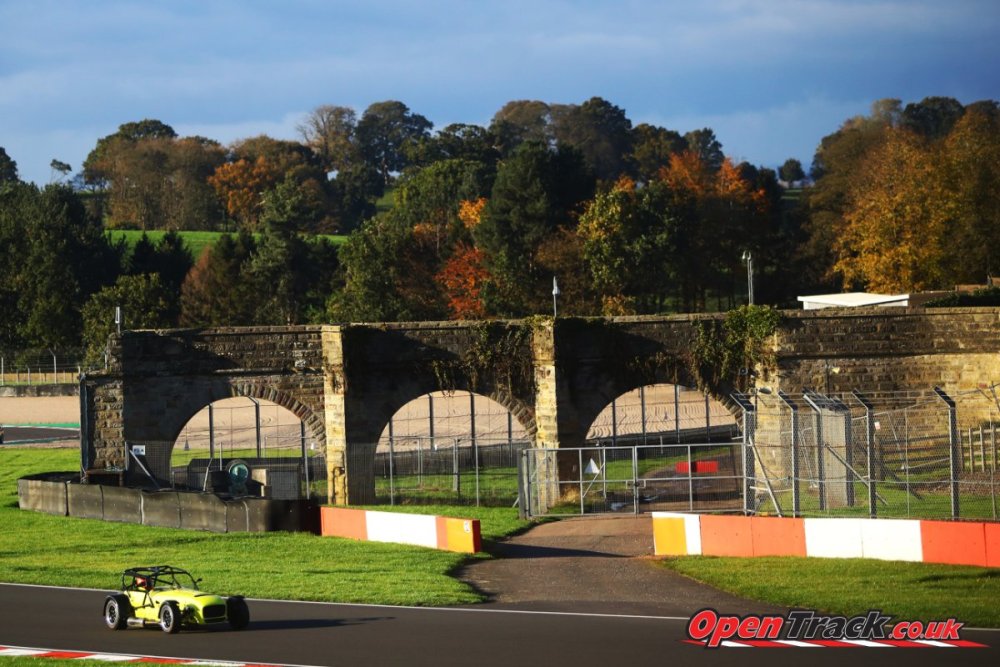
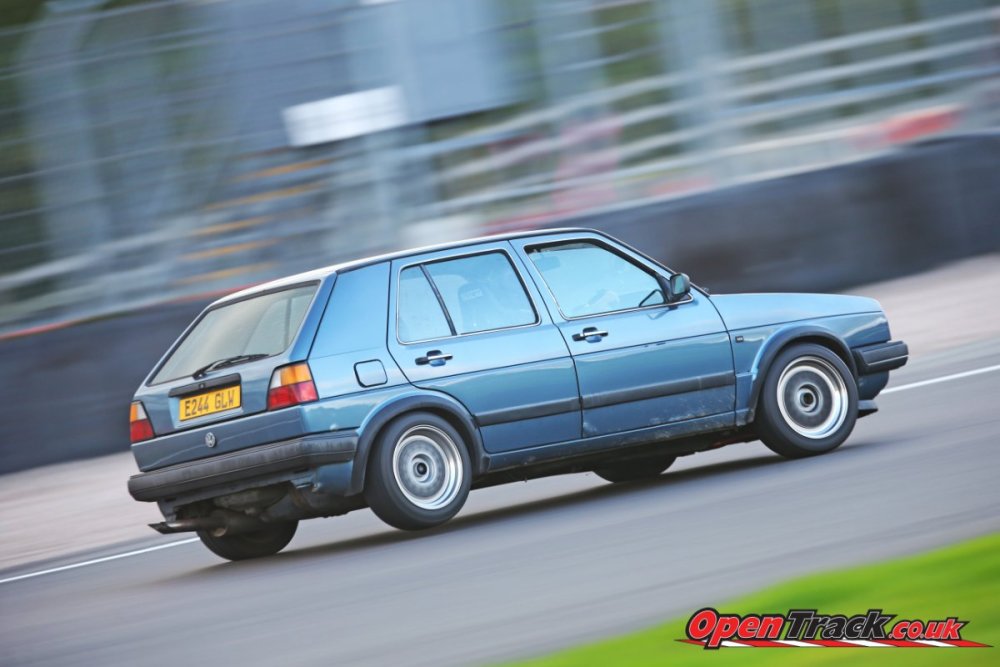
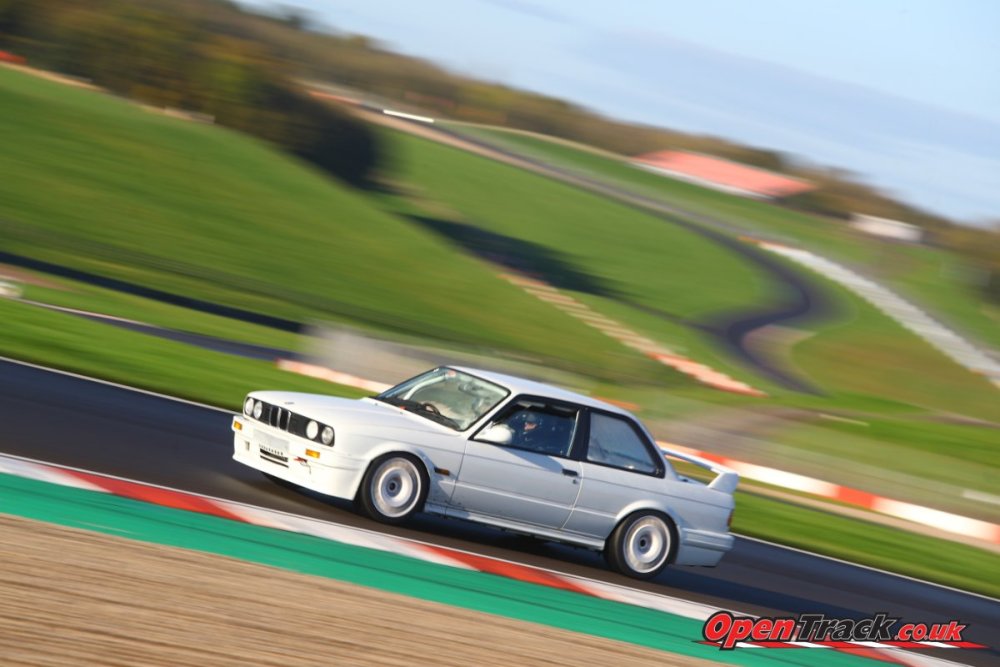
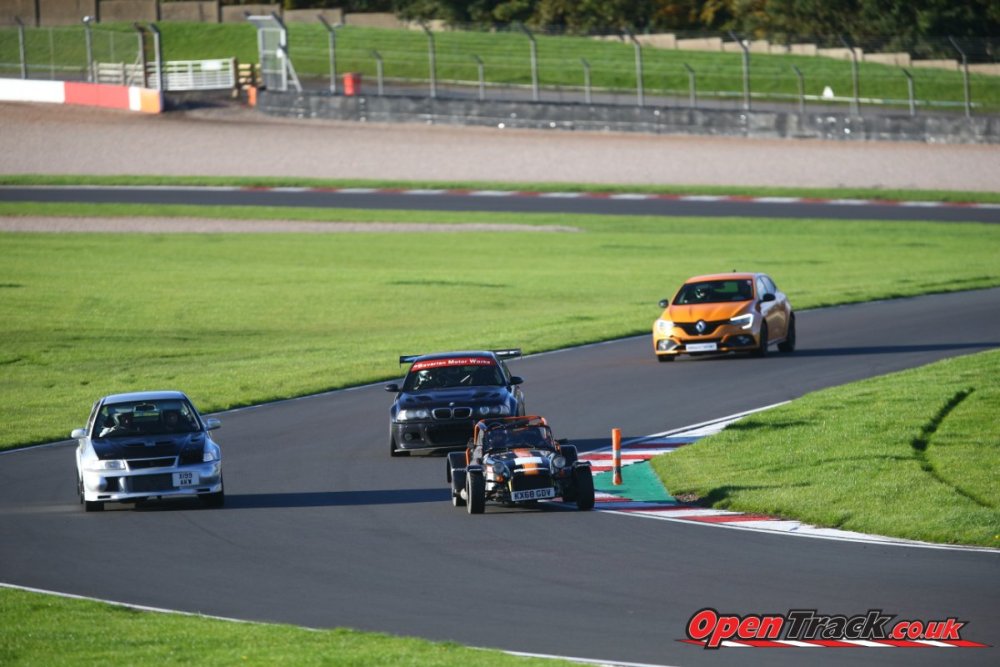
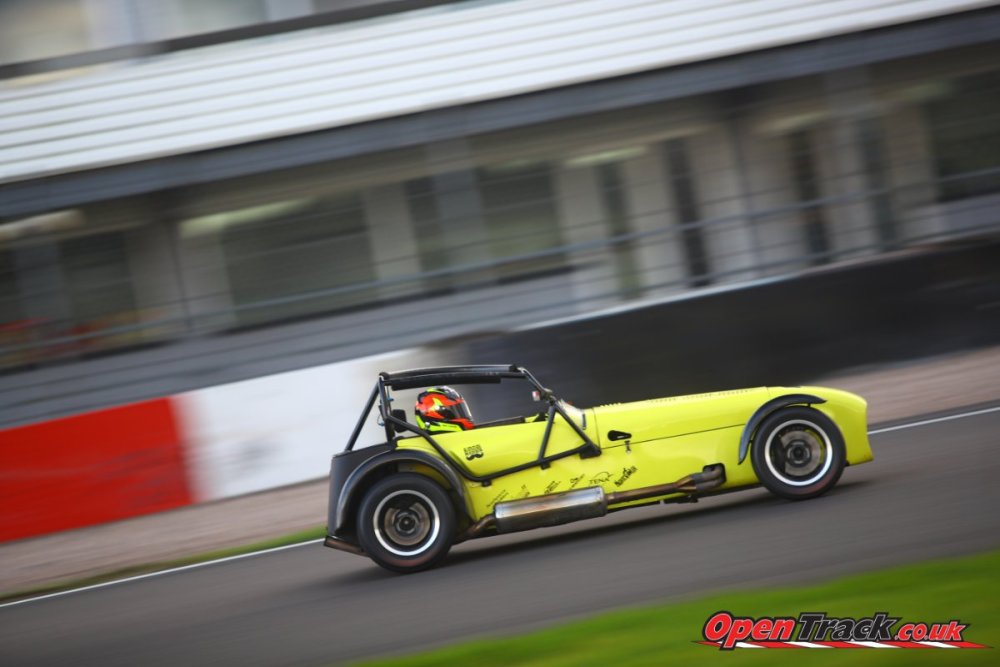
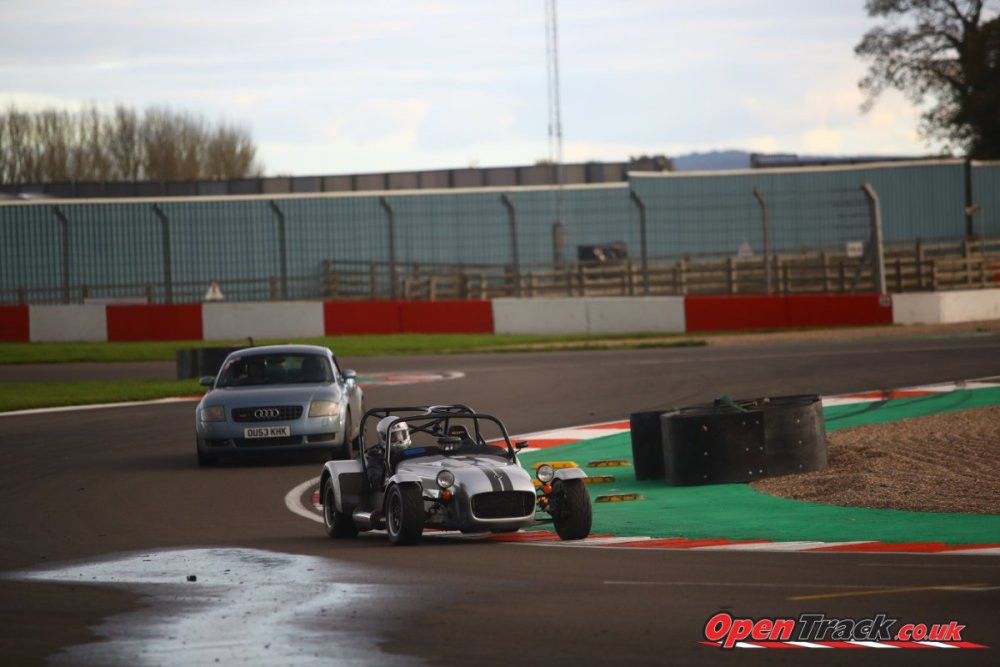
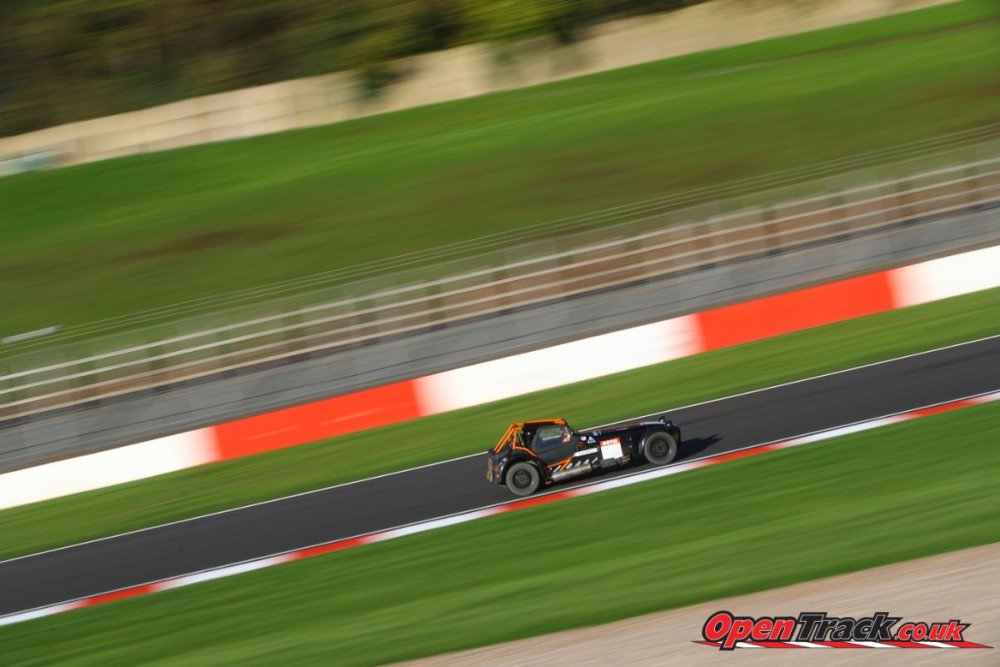
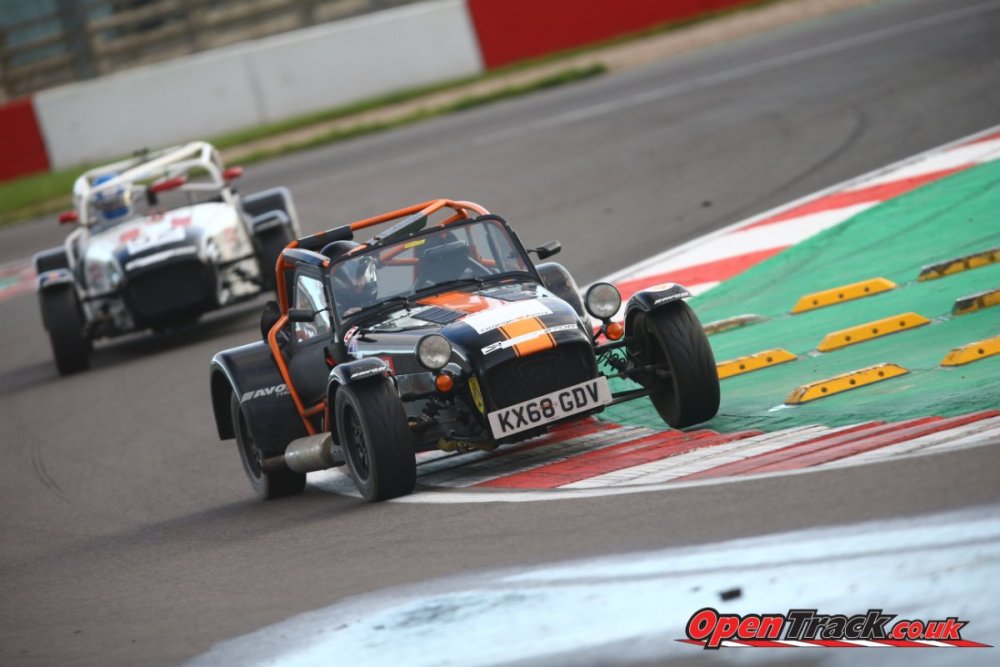
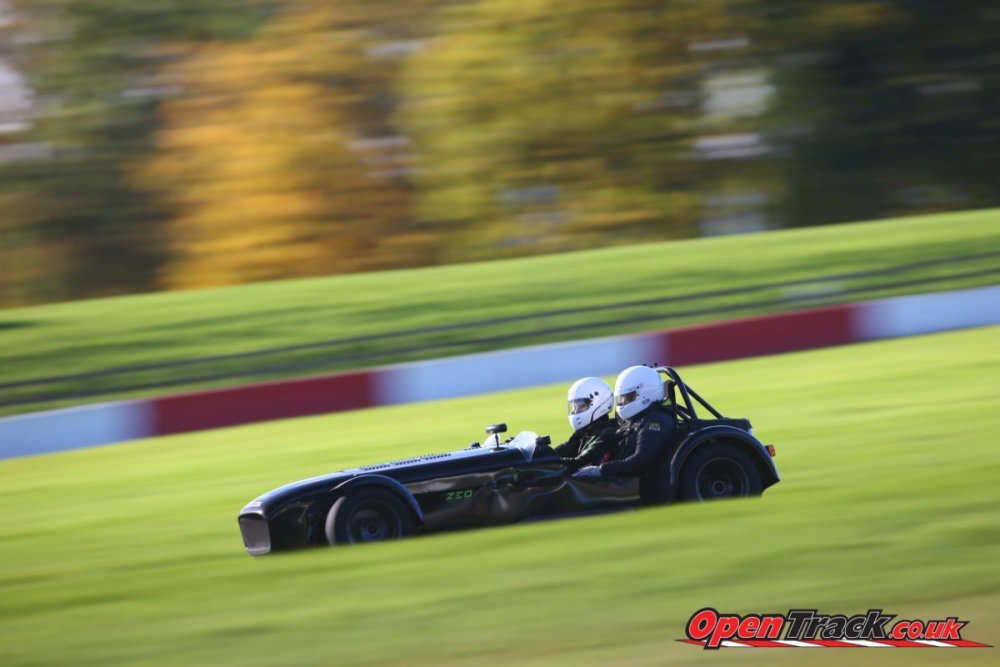
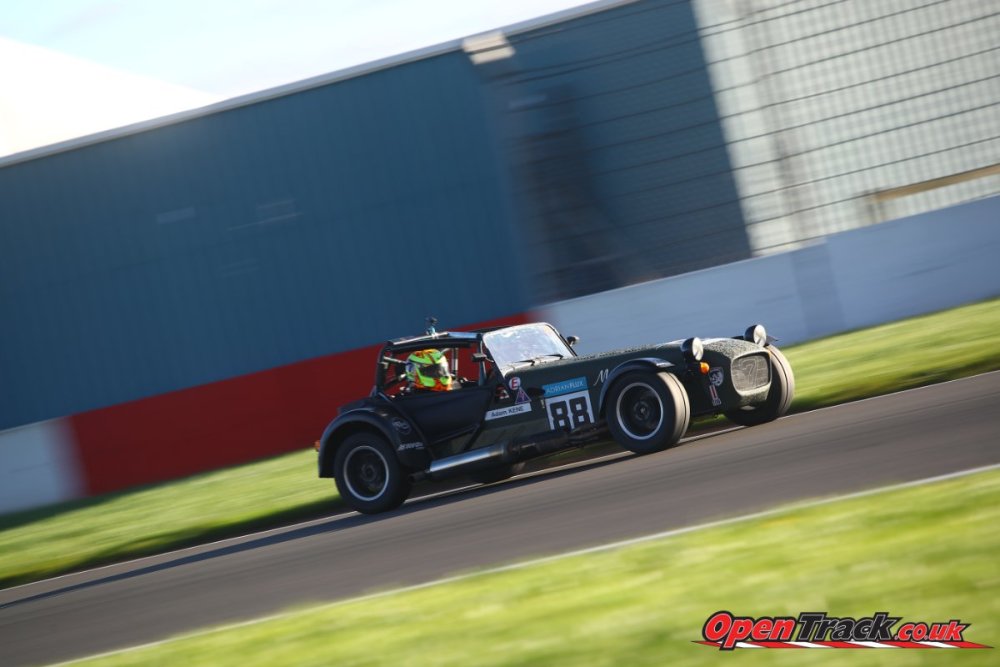
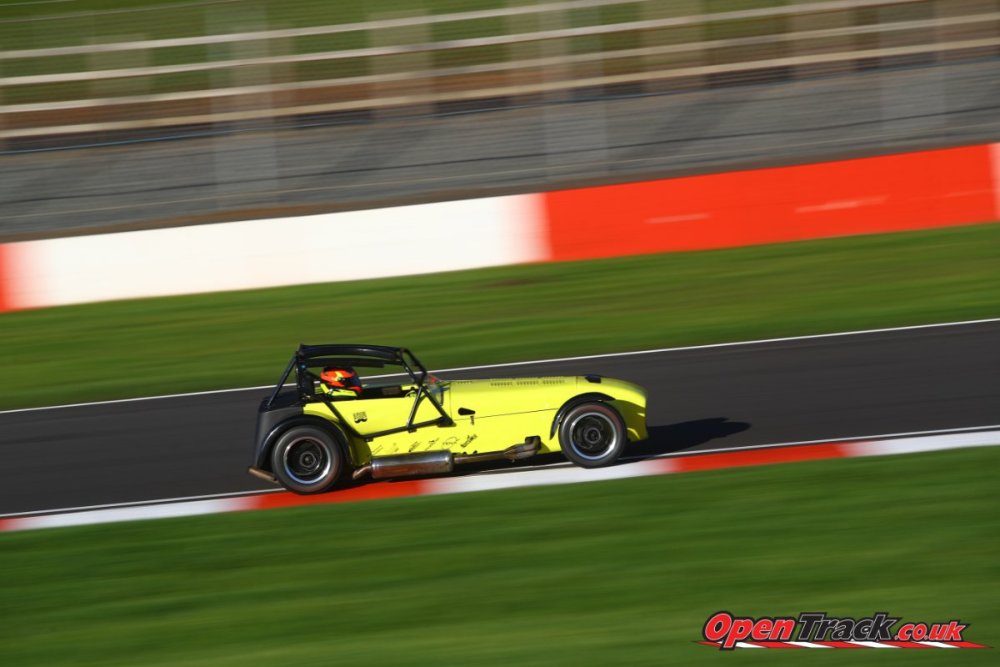
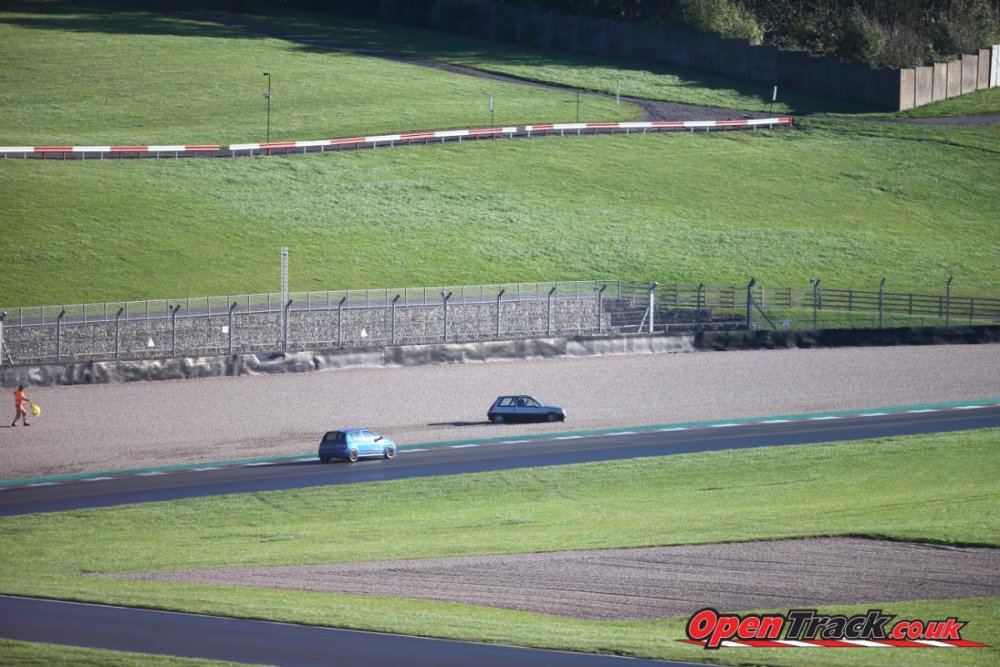
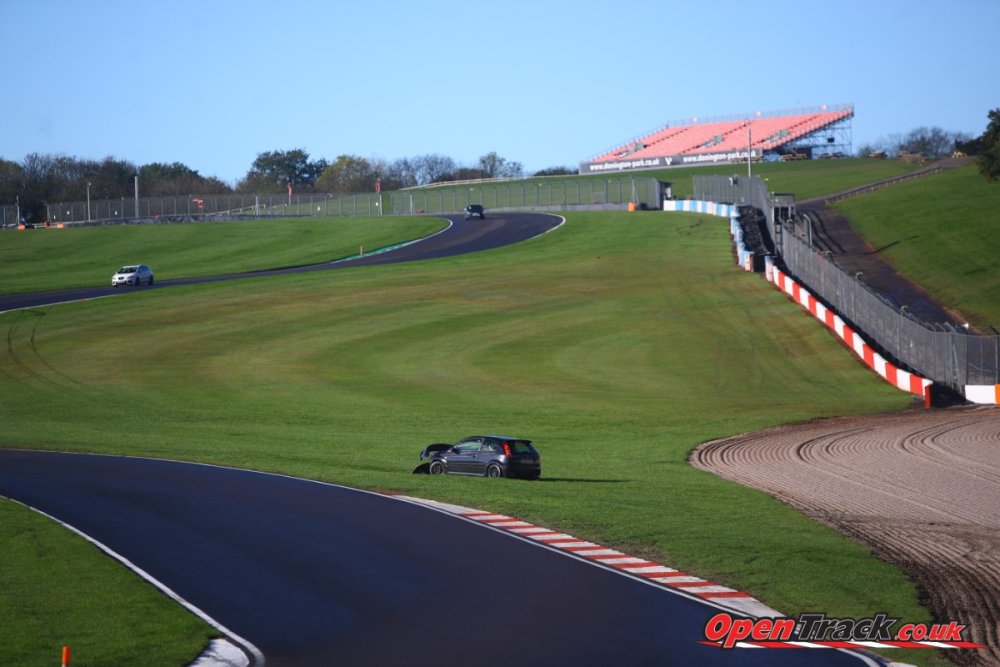
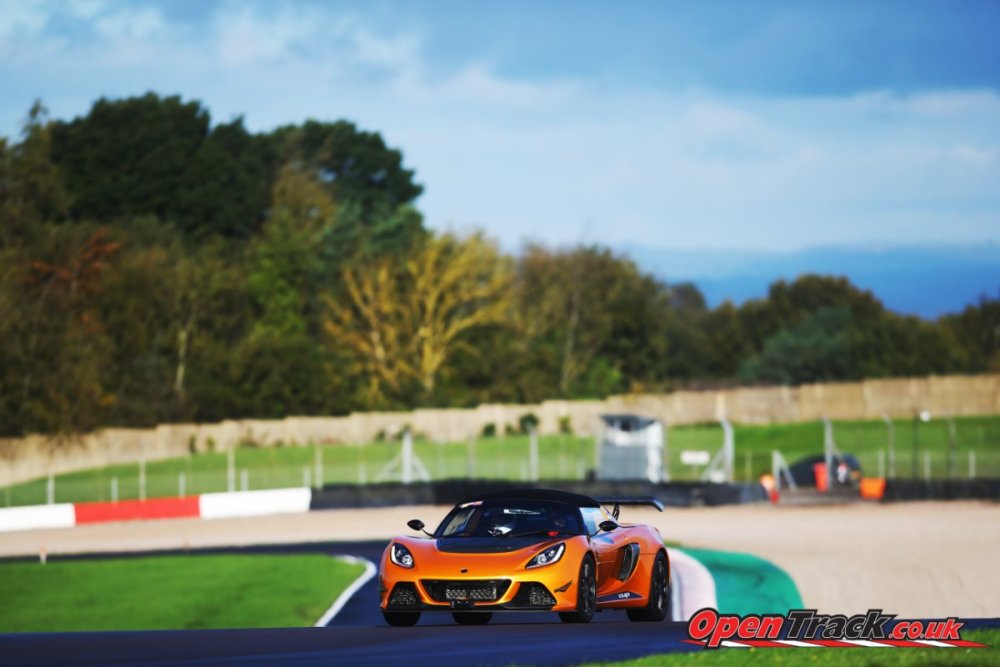
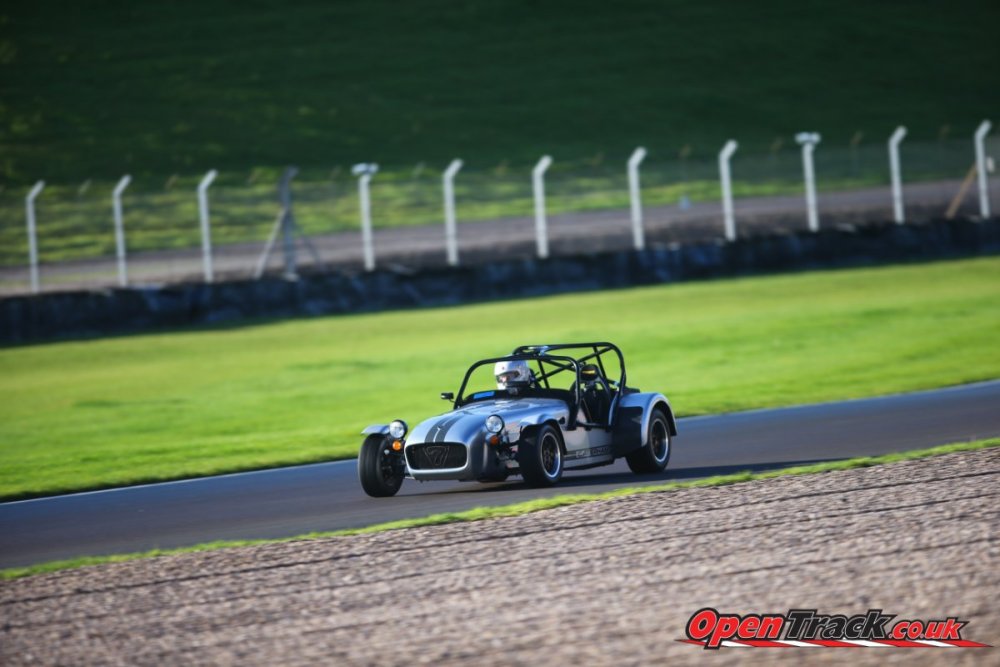
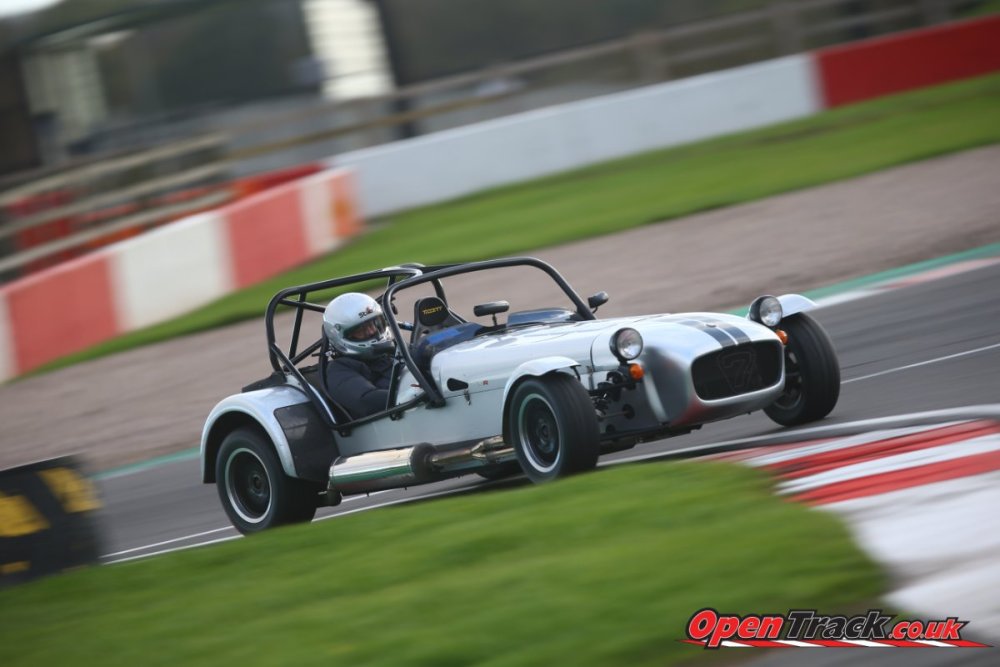
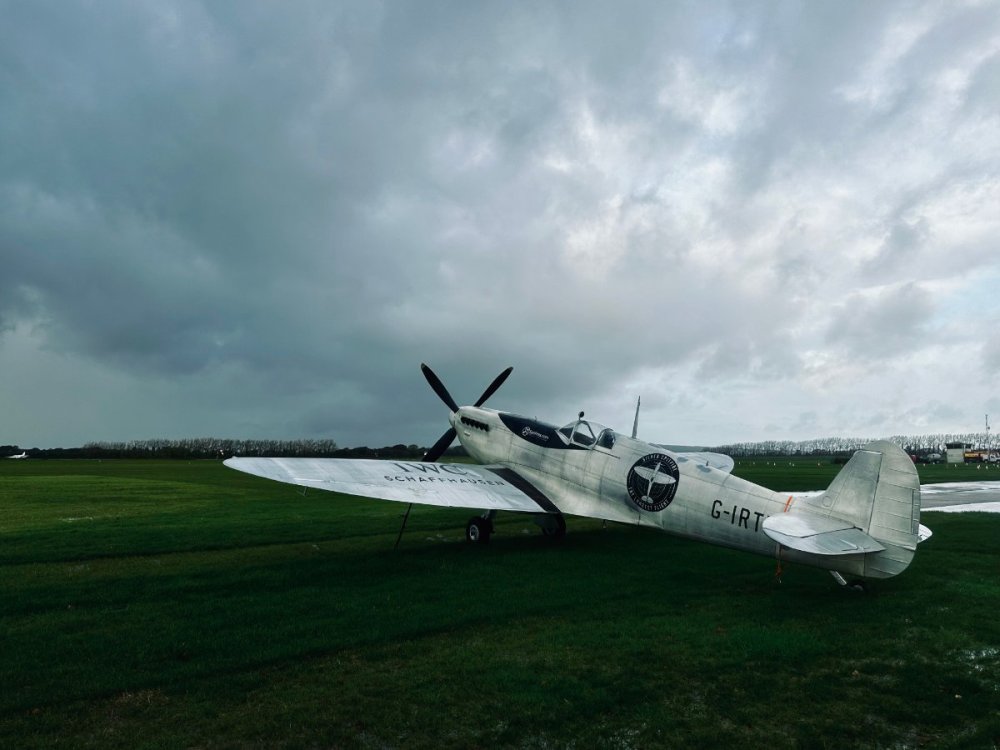
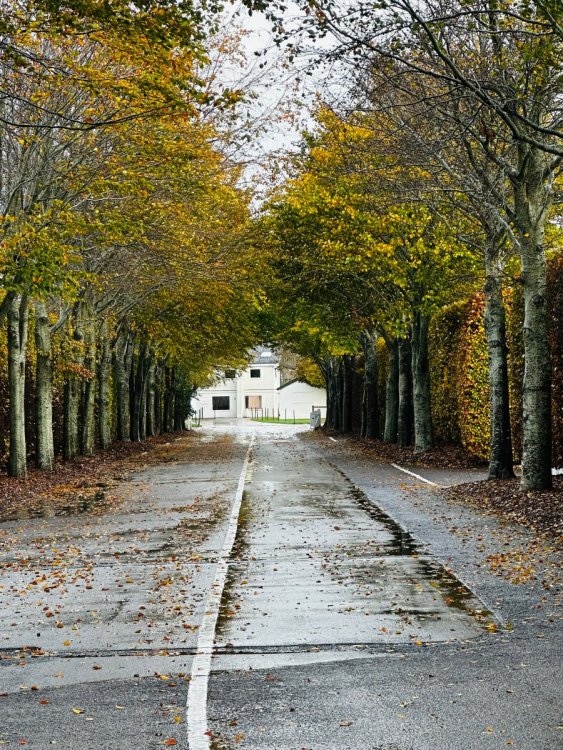
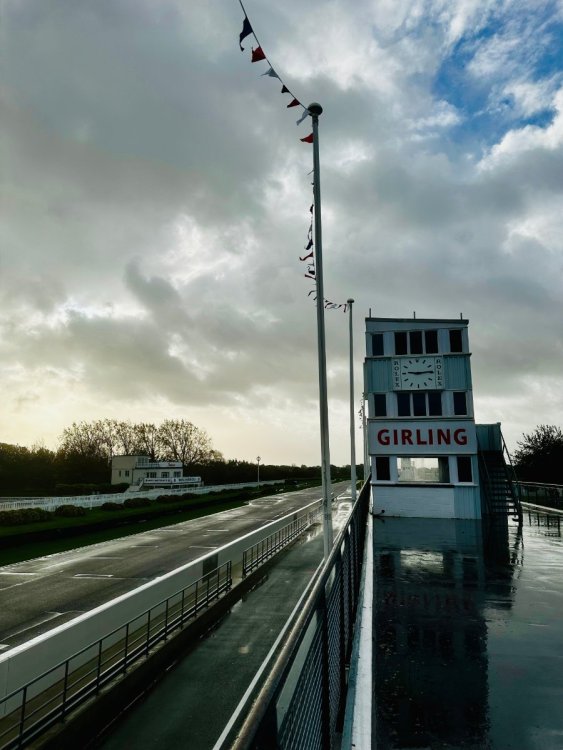
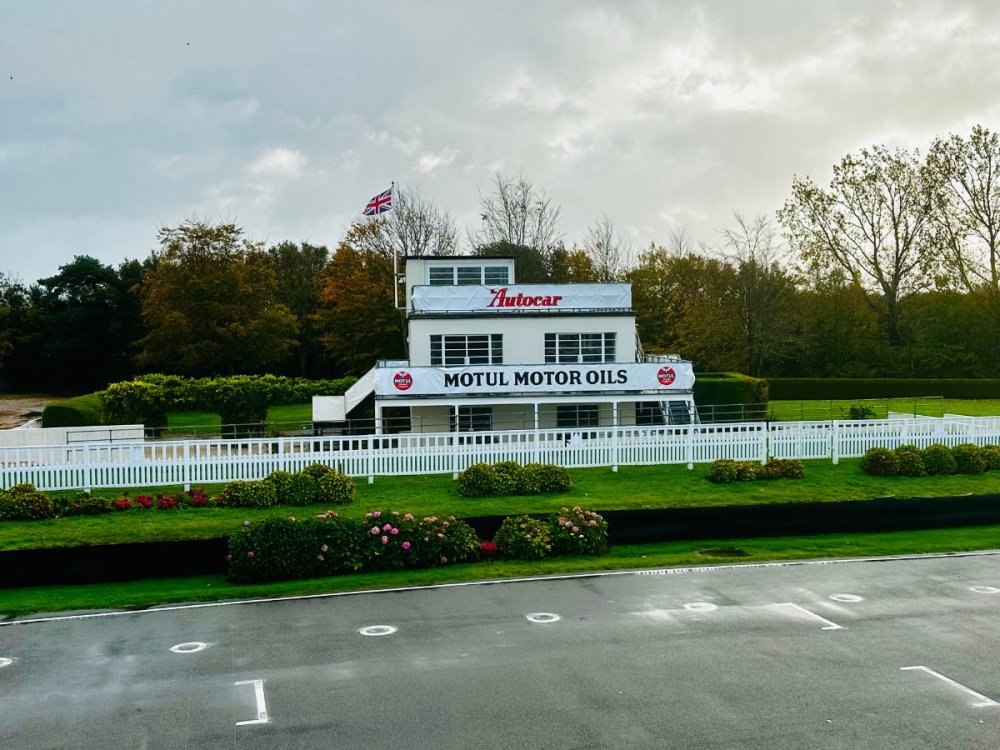
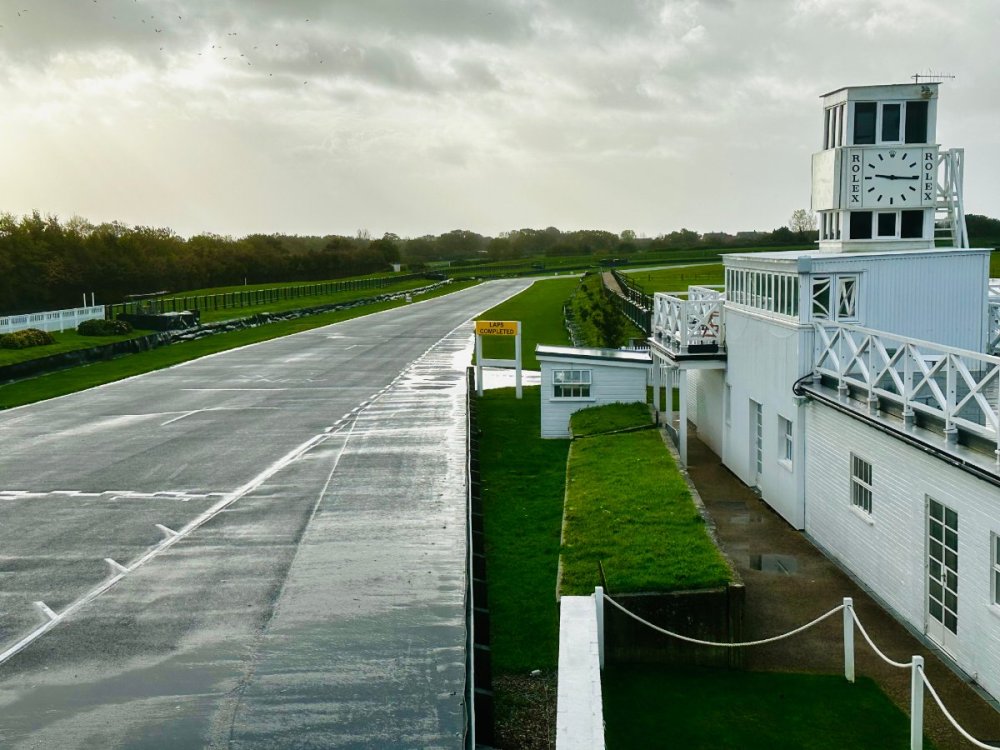
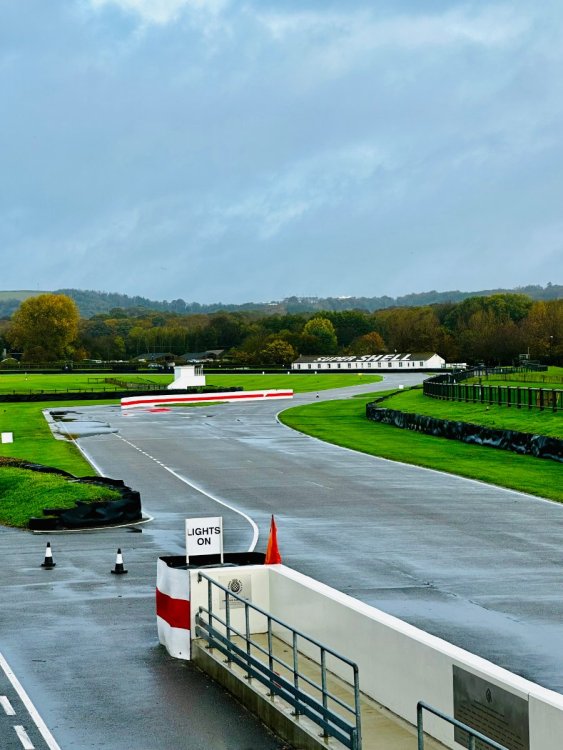
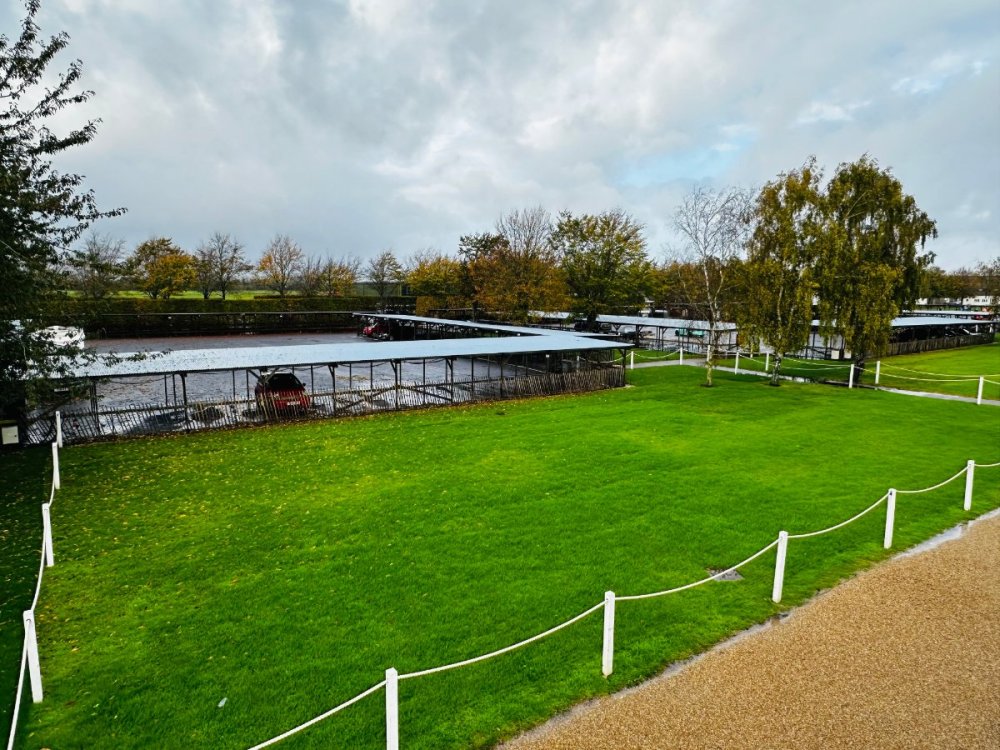
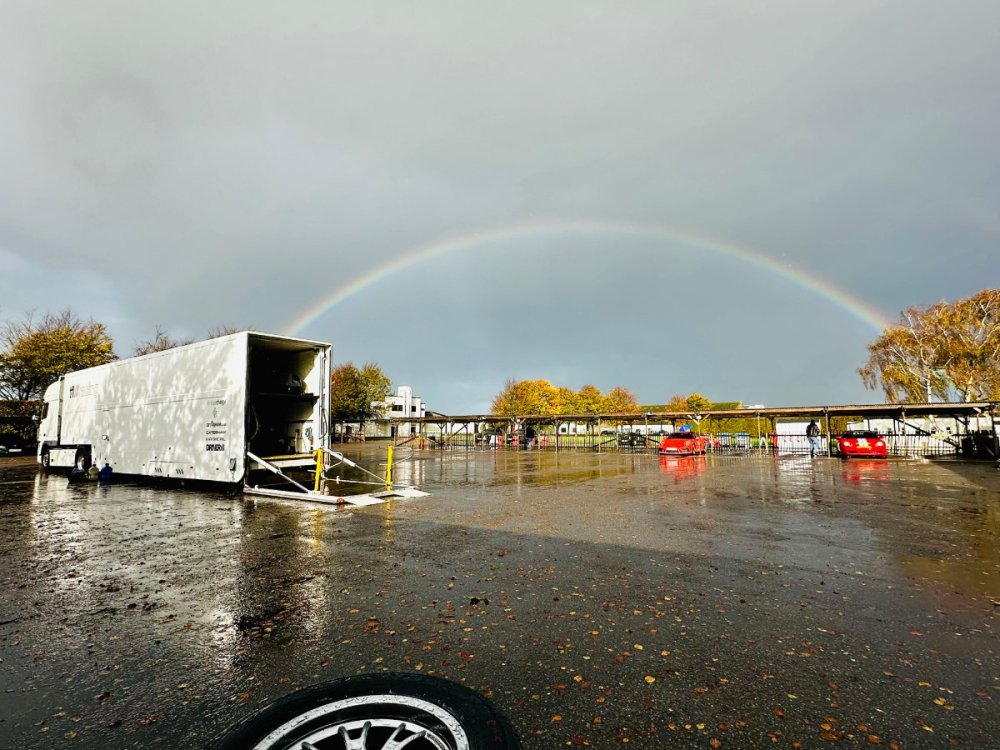
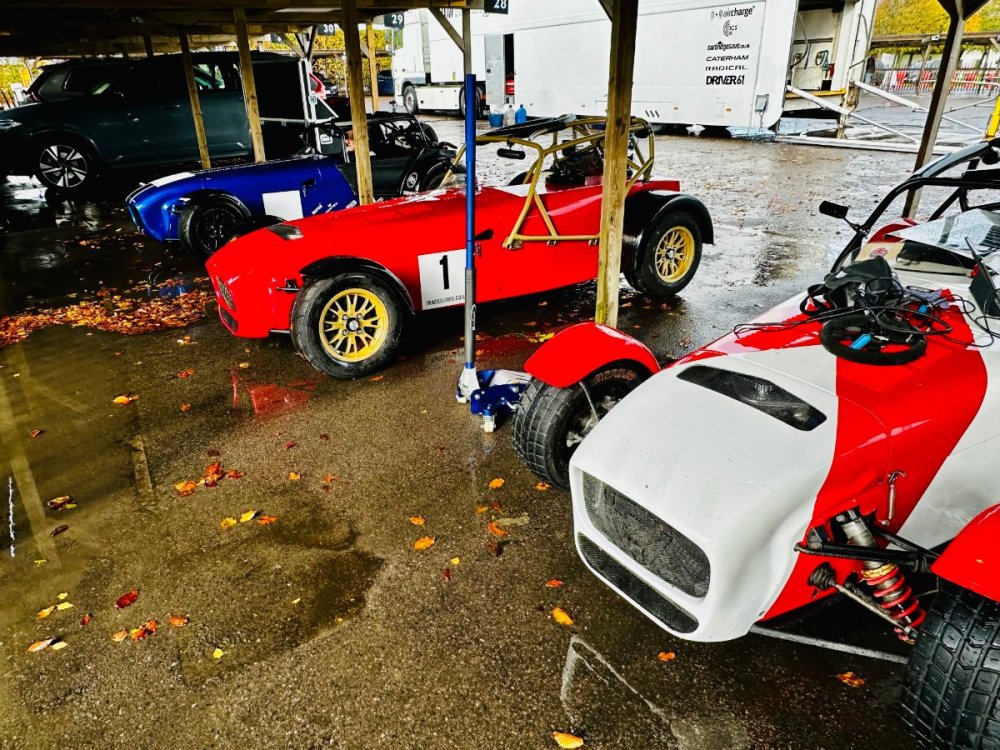
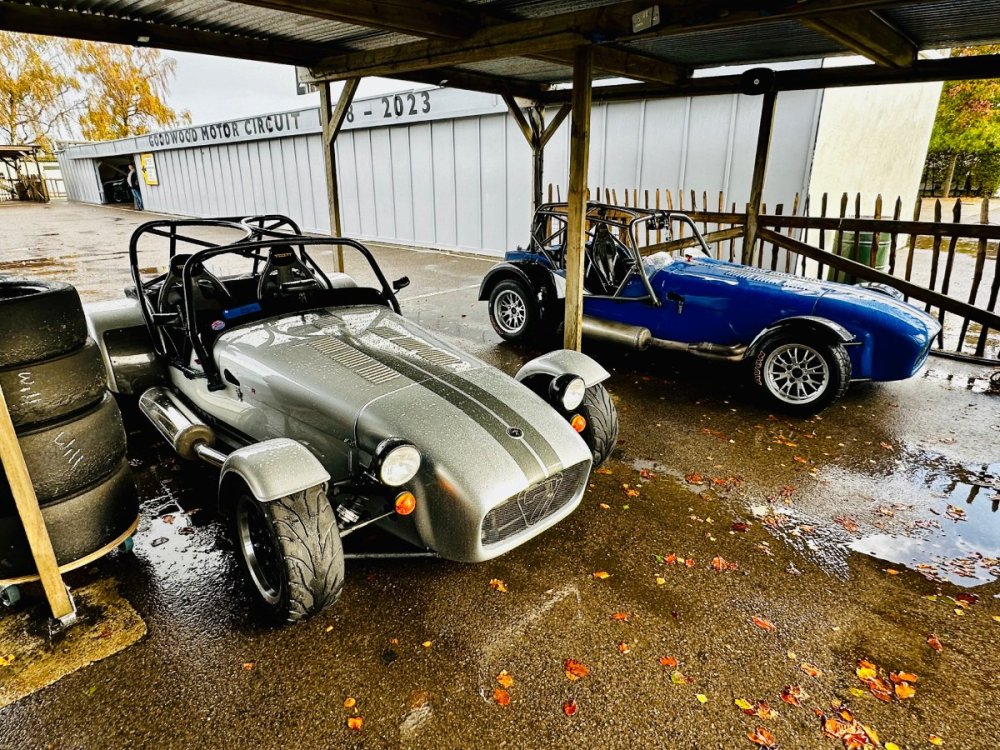
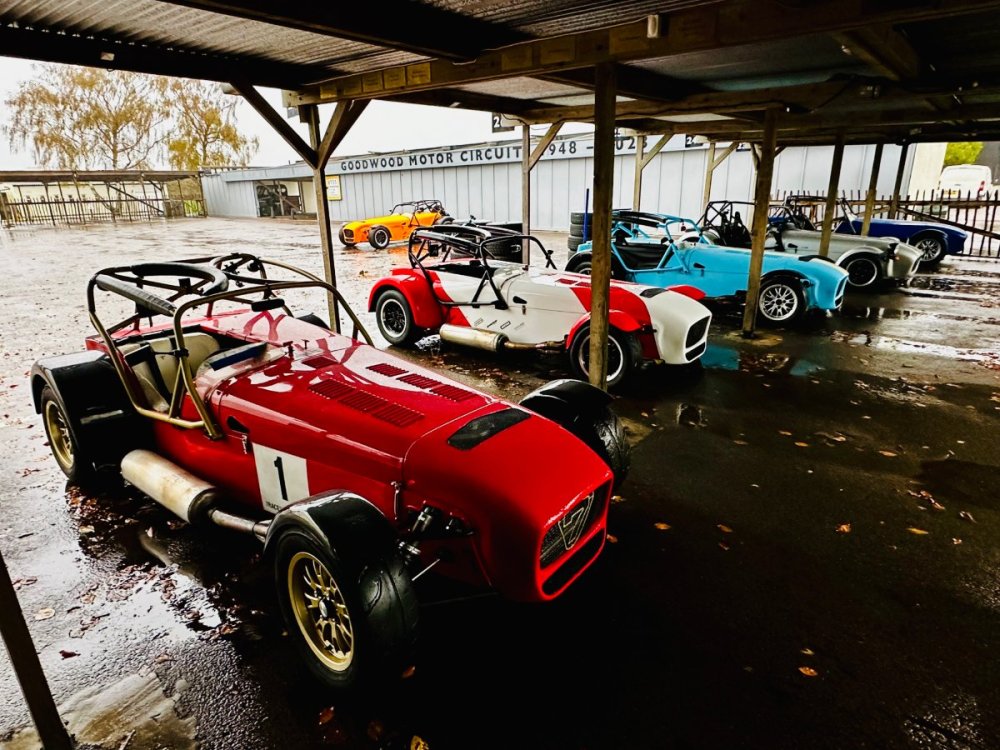
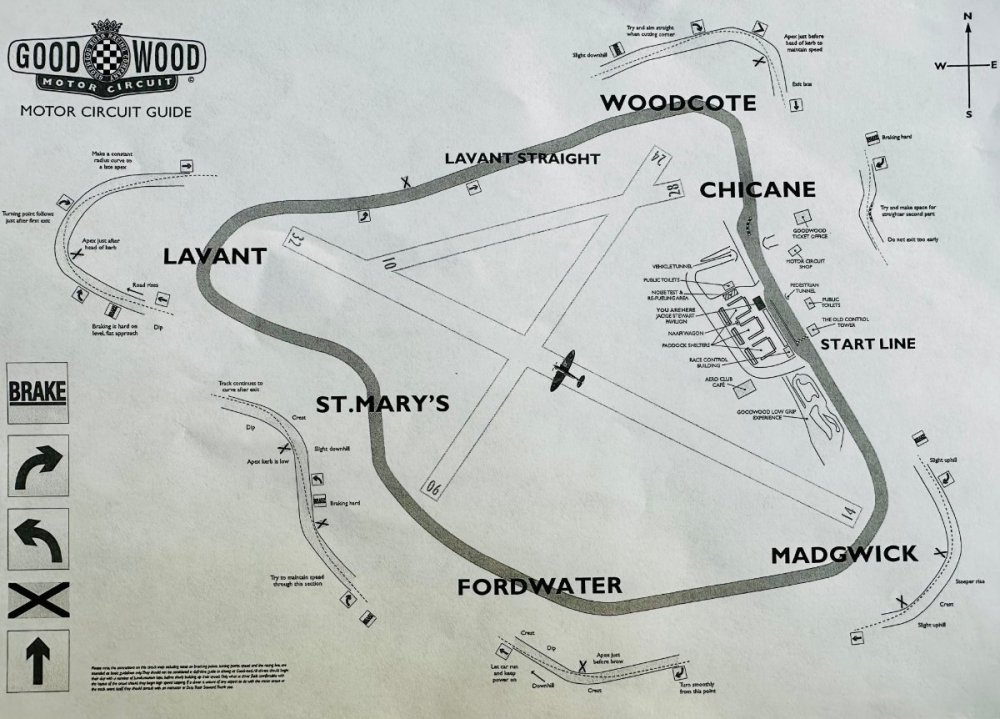
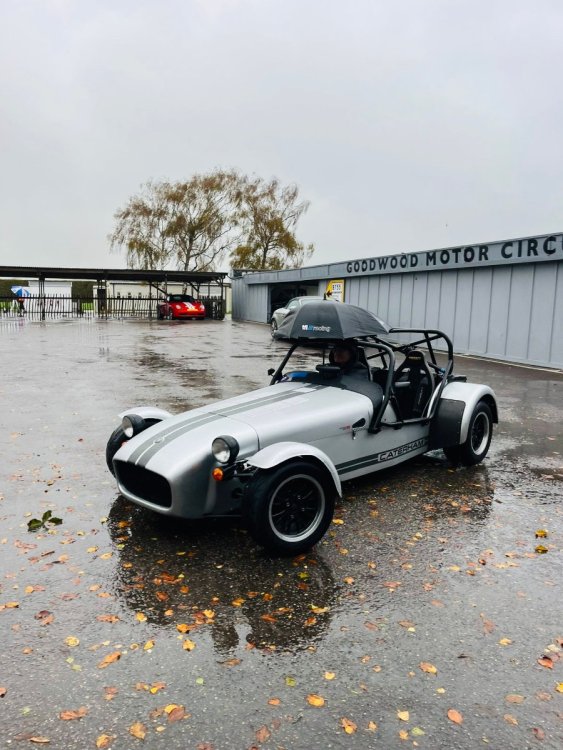
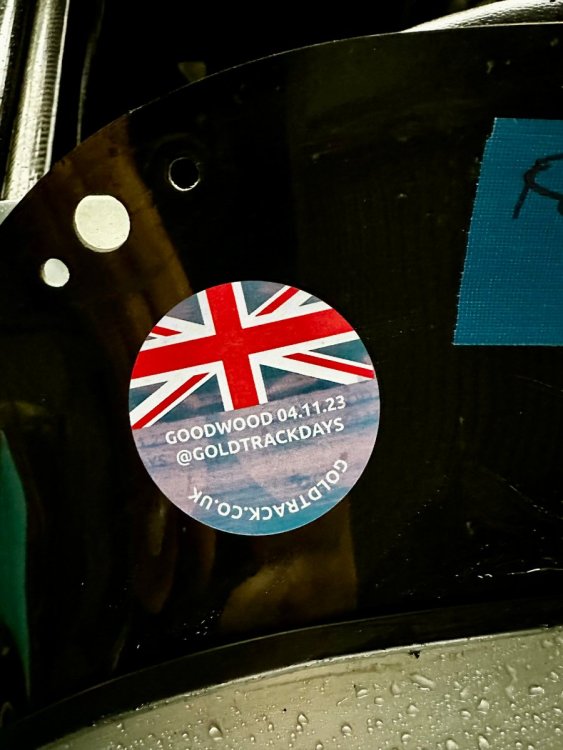
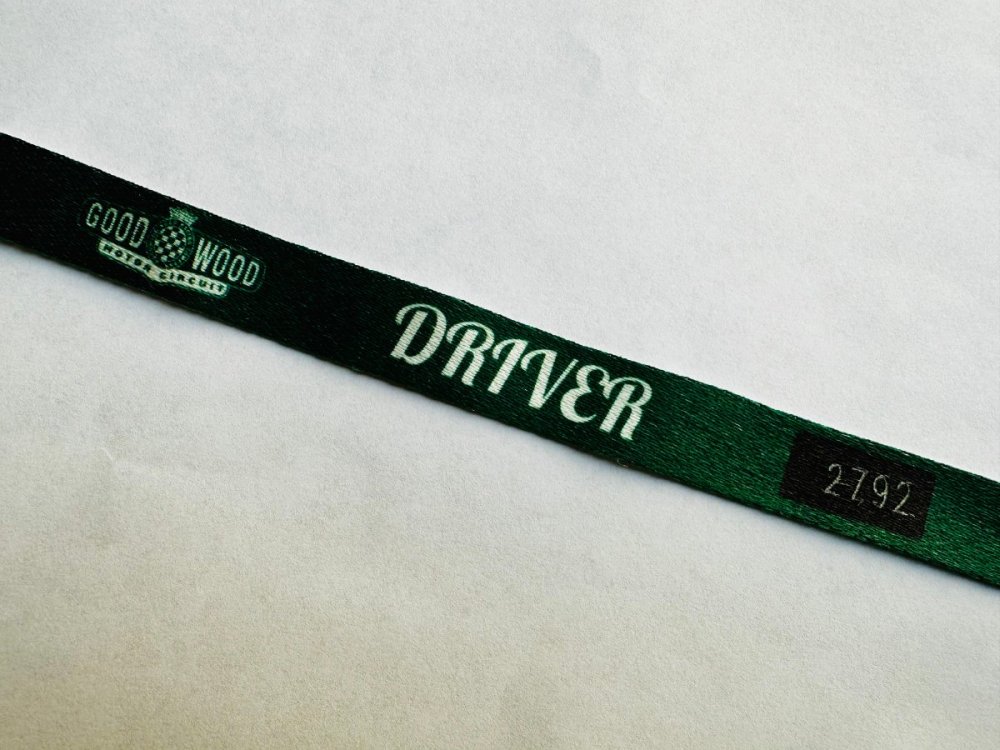
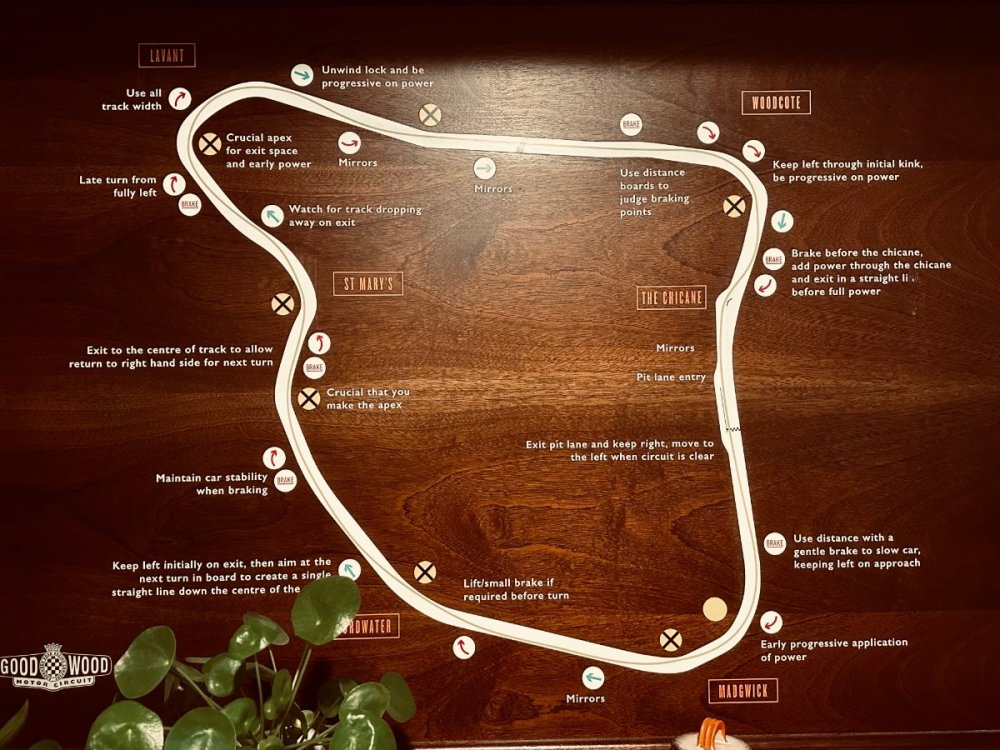

Recommended Comments
There are no comments to display.